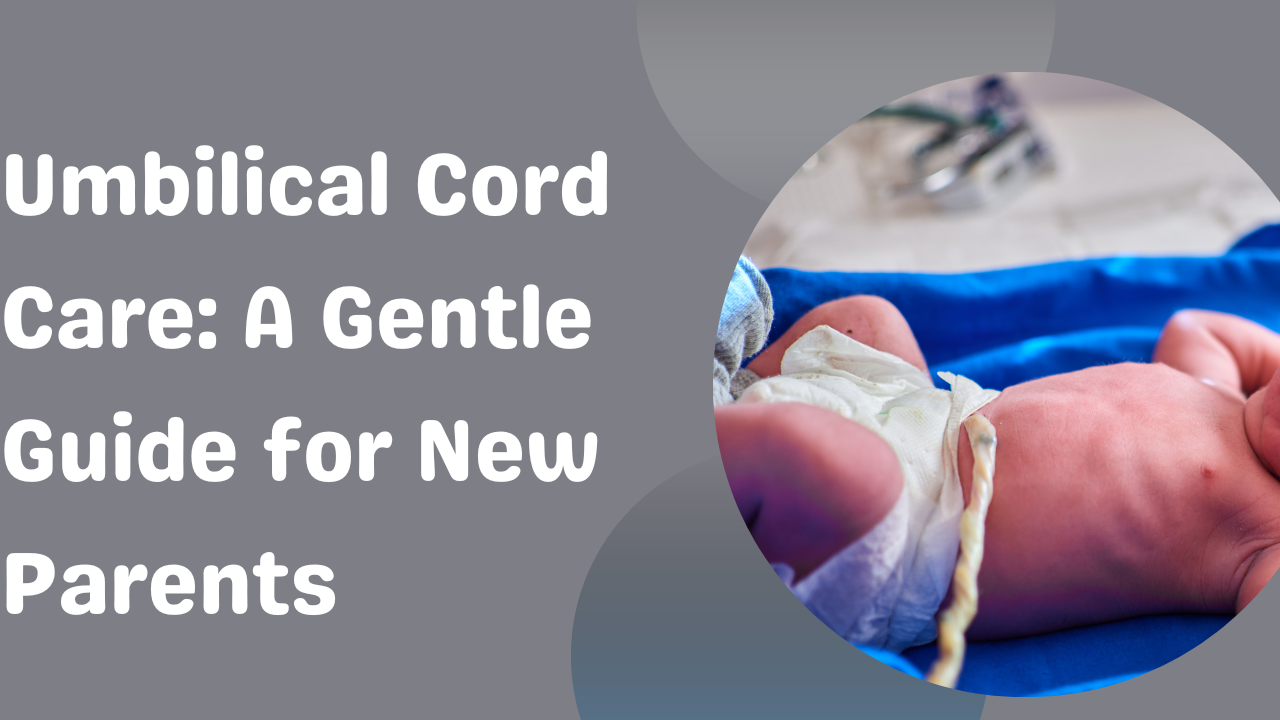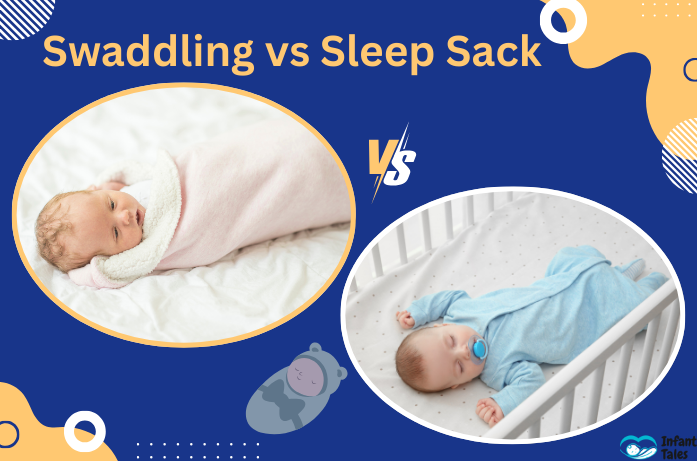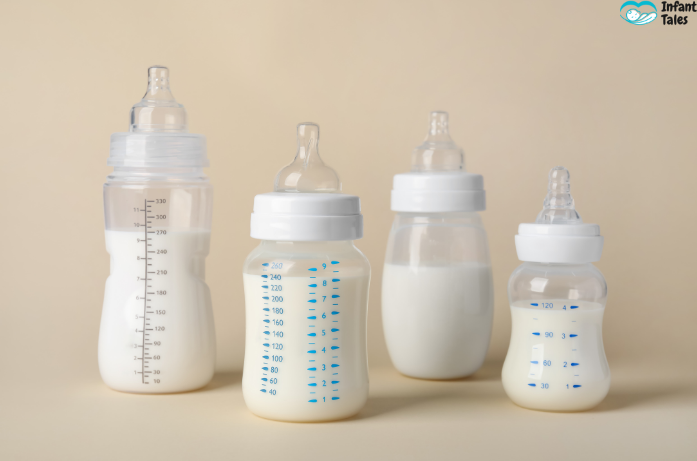Welcome to the journey of parenthood! As a new parent or caregiver, one of the first things you’ll notice after your baby’s birth is a small stump attached to their belly — the umbilical cord stump. Caring for it properly is important to ensure safe healing and to prevent infections.
🧬 What is the Umbilical Cord Stump?
The umbilical cord connected your baby to the placenta during pregnancy, supplying oxygen and nutrients. After birth, the cord is clamped and cut, leaving a small stump that typically dries up and falls off within 1 to 3 weeks.
🛡️ Why Umbilical Cord Care Matters
Proper care of the umbilical cord stump helps prevent infections, which can sometimes be serious. While most cases resolve without issue, paying attention to hygiene and observing for signs of infection is crucial.
🧼 Step-by-Step Umbilical Cord Care
- Keep it dry: Air drying the stump helps it fall off faster. Fold diapers below the stump to avoid covering it.
- Use sponge baths: Until the stump falls off, avoid immersing your baby in water. Sponge baths are safer during this time.
- Don’t pull on it: Let it fall off naturally. Do not tug, even if it’s hanging by a thread.
- Avoid alcohol unless advised: Previously, alcohol swabs were recommended, but now most pediatricians suggest dry cord care unless infection signs appear.
- Dress in loose clothing: Avoid tight clothing or waistbands that could rub against the stump.
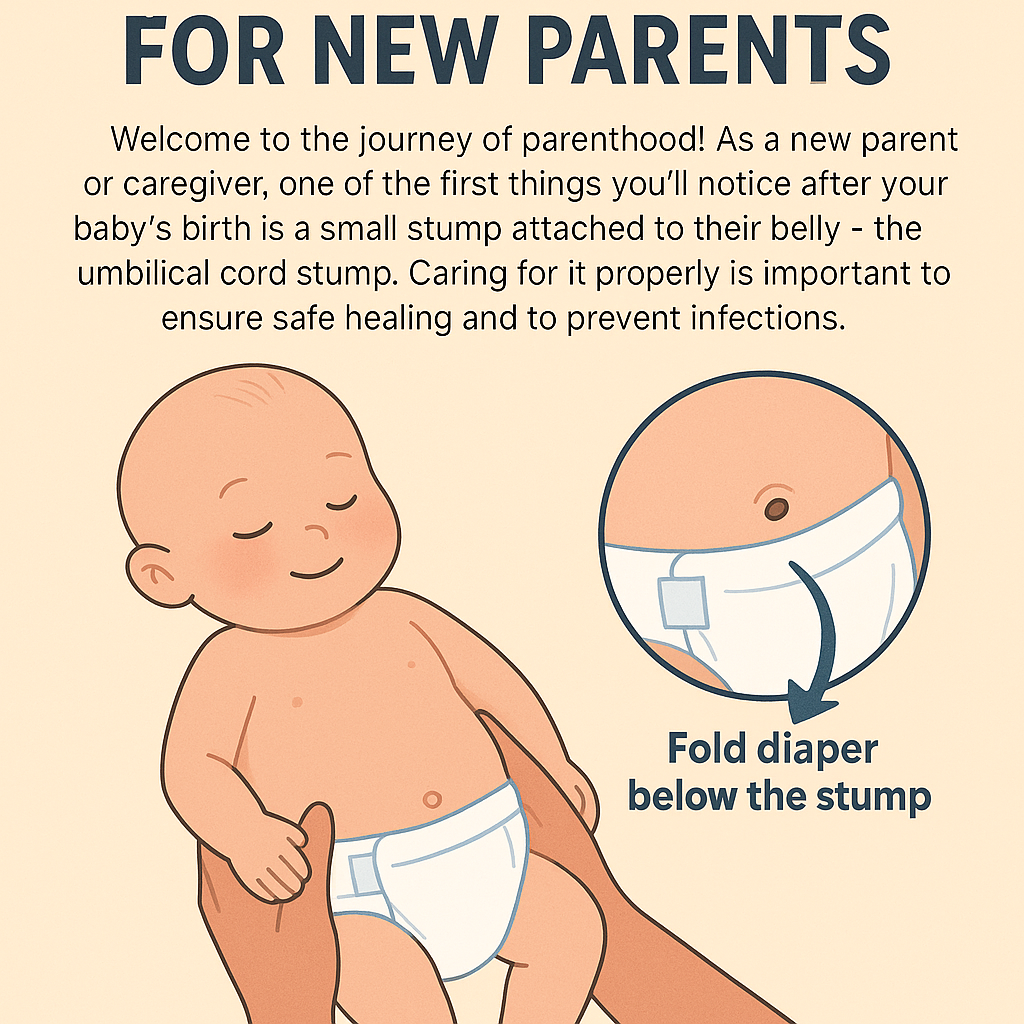
Keep the diaper folded below the stump to allow healing and avoid irritation. Here’s how the stump typically heals over 3 weeks.
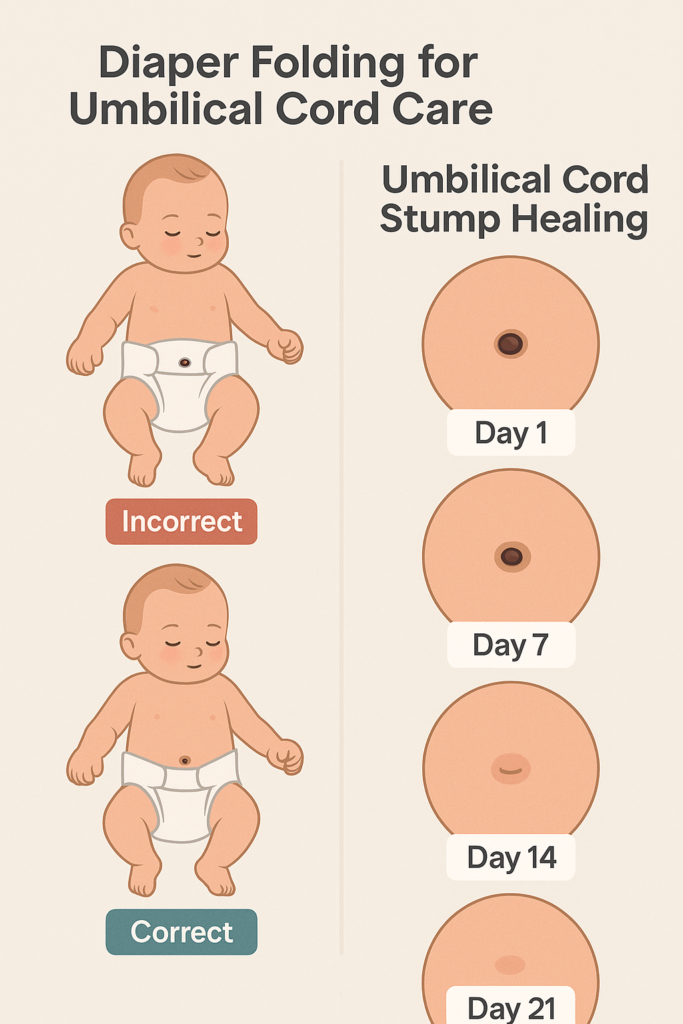
Myth vs. Fact:
Many new parents believe that cleaning the umbilical cord stump with rubbing alcohol is mandatory to prevent infection. However, this is a common misconception. In fact, current guidelines from the American Academy of Pediatrics recommend dry cord care—which means simply keeping the area clean and dry—unless your pediatrician specifically advises otherwise. Alcohol may actually slow down the natural drying process, so it’s no longer the go-to method unless signs of infection are present.
📅 When Will the Umbilical Cord Fall Off?
The cord usually falls off within 7 to 21 days. Once it falls, there might be a small pink or yellowish area. This is normal and should heal on its own in a few days.
⚠️ Signs of Infection: When to Call a Doctor
- Redness or swelling around the base
- Foul-smelling yellow discharge
- Fever over 100.4°F (38°C)
- Bleeding that doesn’t stop with gentle pressure
- Baby seems in pain when the area is touched
If you notice any of these signs, contact your pediatrician promptly.
💡 Quick Tips for Busy Parents
- Always wash your hands before touching the area.
- Check the cord stump daily during diaper changes.
- Don’t panic if there’s a drop of blood when it falls — that’s normal.
❤️ Final Thoughts
Umbilical cord care may seem intimidating, but it’s usually a straightforward process. Stay calm, follow safe hygiene practices, and your baby’s belly button will heal beautifully.
As always, consult your pediatrician if you have any doubts. You’re doing a wonderful job!
Disclaimer: This article is for informational purposes only and should not replace professional medical advice. Always consult a healthcare provider for any medical concerns.
🔗 Additional Trusted Resources
- American Academy of Pediatrics – Umbilical Cord Care
- Stanford Children’s Health – Umbilical Cord Care
- Centers for Disease Control and Prevention (CDC) – Infant Health Resources
❓ Frequently Asked Questions (FAQ)
1. Is it normal for the umbilical stump to bleed slightly when it falls off?
Yes, it’s common to see a few drops of blood or a scab when the stump falls off. As long as the area isn’t swollen, red, or oozing pus, this is part of the normal healing process.
2. What should I do if the stump accidentally gets wet during a bath?
Gently pat it dry with a clean, soft cloth. Occasional moisture is not a major issue, but try to keep the area dry afterward to promote faster healing.
3. Can I use baby powder or ointment on the stump?
No, avoid applying powders, creams, or ointments to the stump unless advised by your pediatrician. These can trap moisture and delay healing.
4. What if the stump hasn’t fallen off after 3 weeks?
If it hasn’t fallen off after 3 weeks or shows signs of infection, consult your pediatrician. Rarely, delayed separation may need medical evaluation.
